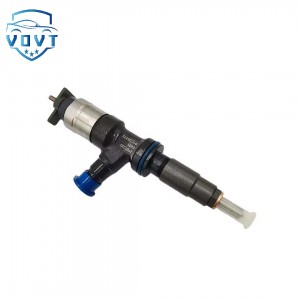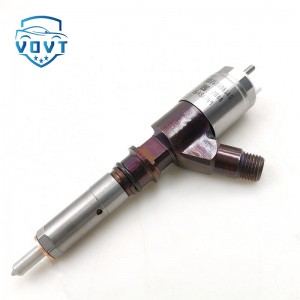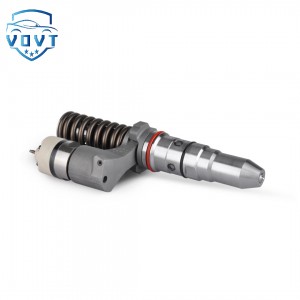New High Quality Diesel Injector 328-2586 328-2587 387-9426 387-9429 387-9428 For CAT C7
Products Description
| Reference. Codes | C7 |
| Application | C7 |
| MOQ | 4PCS |
| Certification | ISO9001 |
| Place of Origin | China |
| Packaging | Neutral packing |
| Quality Control | 100% tested before shipment |
| Lead time | 7~10 working days |
| Payment | T/T, L/C, Paypal, Western Union, MoneyGram or as your requirement |
The car fault light is on and the fuel injector needs to be checked
If the car fault light is on but the power does not change, you still need to consider checking the injector, but there may be other reasons. The following is a specific analysis:
Reasons related to the injector
Minor blockage or leakage: The injector may have a slight blockage or leakage. When the blockage is light, although the fuel injection is affected to a certain extent, it can still maintain the basic fuel supply of the engine, so that the engine power has no obvious change temporarily. Similarly, a slight leak in the injector may not have a significant impact on the power in a short period of time, but it will cause problems such as increased fuel consumption and abnormal exhaust emissions, which may trigger the fault light to light up.
Intermittent fault in the injector circuit: The circuit of the injector may have intermittent poor contact or other faults. In some cases, a circuit fault will cause the injector to work abnormally, which will trigger the fault light to light up, but because the fault is intermittent, the engine can still maintain normal power output under the current working conditions.
Other possible reasons
Sensor failure: The car engine has multiple sensors, such as oxygen sensors, water temperature sensors, air flow sensors, etc. When these sensors fail, they send an error signal to the engine control unit (ECU), causing the ECU to misjudge the engine operating conditions and thus turn on the fault light. However, if the sensor failure has little effect on the overall operation of the engine, it may not immediately cause a drop in power. For example, an oxygen sensor failure may cause the ECU to deviate from the control of the mixture concentration, but within a certain range, the engine can still maintain normal power through other compensation mechanisms.
Emission system failure: Problems with emission-related components such as the three-way catalytic converter and the exhaust gas recirculation (EGR) system may also cause the fault light to light up. These components mainly affect the purification and treatment of exhaust emissions, and when they fail, they may not directly affect the engine's power performance. For example, a blocked or damaged three-way catalytic converter will cause exhaust emissions to fail to meet standards, but when the blockage is mild, the engine's intake and exhaust can still maintain a relatively normal state, and the power will not be significantly affected.
Engine control unit (ECU) failure: A failure in the ECU itself may cause it to send an erroneous fault signal, causing the fault light to light up. Although ECU failure may affect the control and management of the engine, if the failure does not involve the part that directly affects the power output, the engine may still maintain normal power.
In summary, when the car fault light is on but the power does not change, the injector may be one of the causes of the failure and needs to be checked. But at the same time, other related parts need to be fully checked to accurately find the cause of the failure and repair it. It is recommended to go to a professional auto repair shop or 4S shop in time and use professional diagnostic equipment for detection and diagnosis.

























